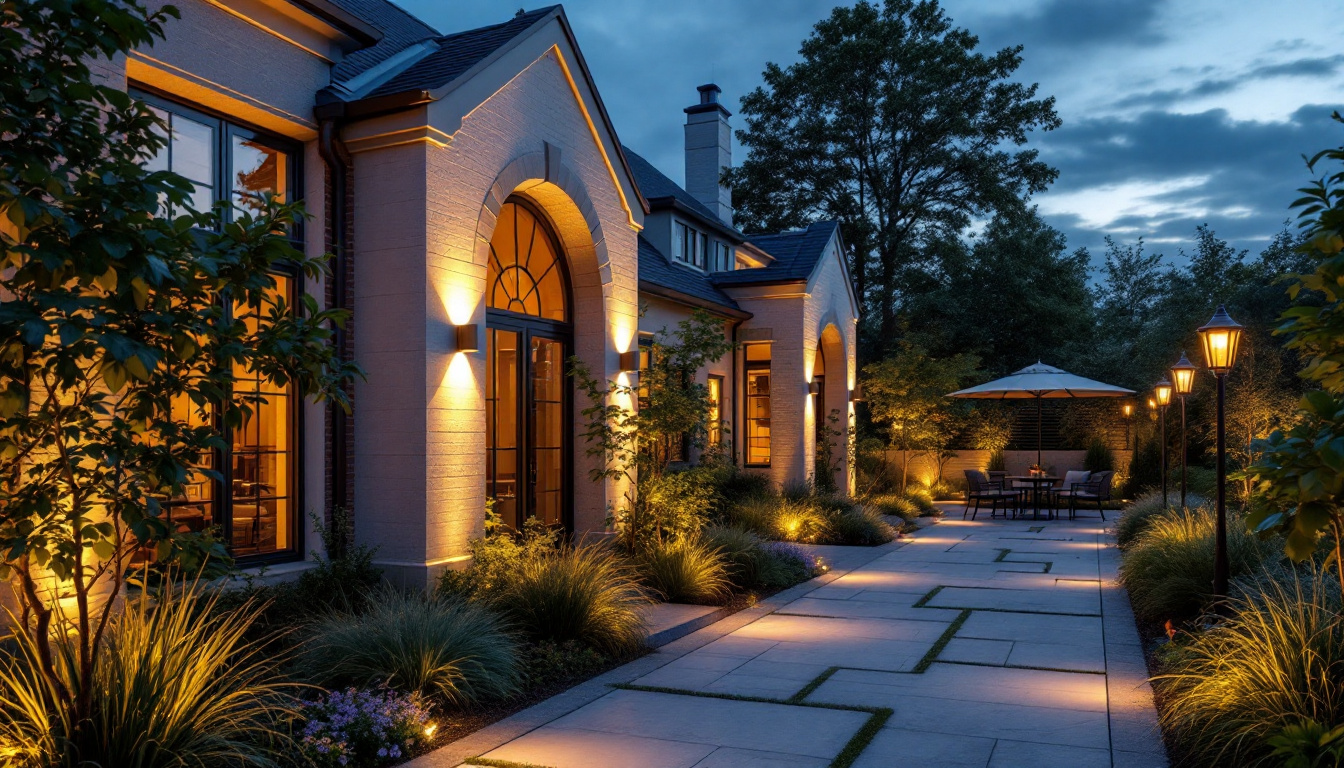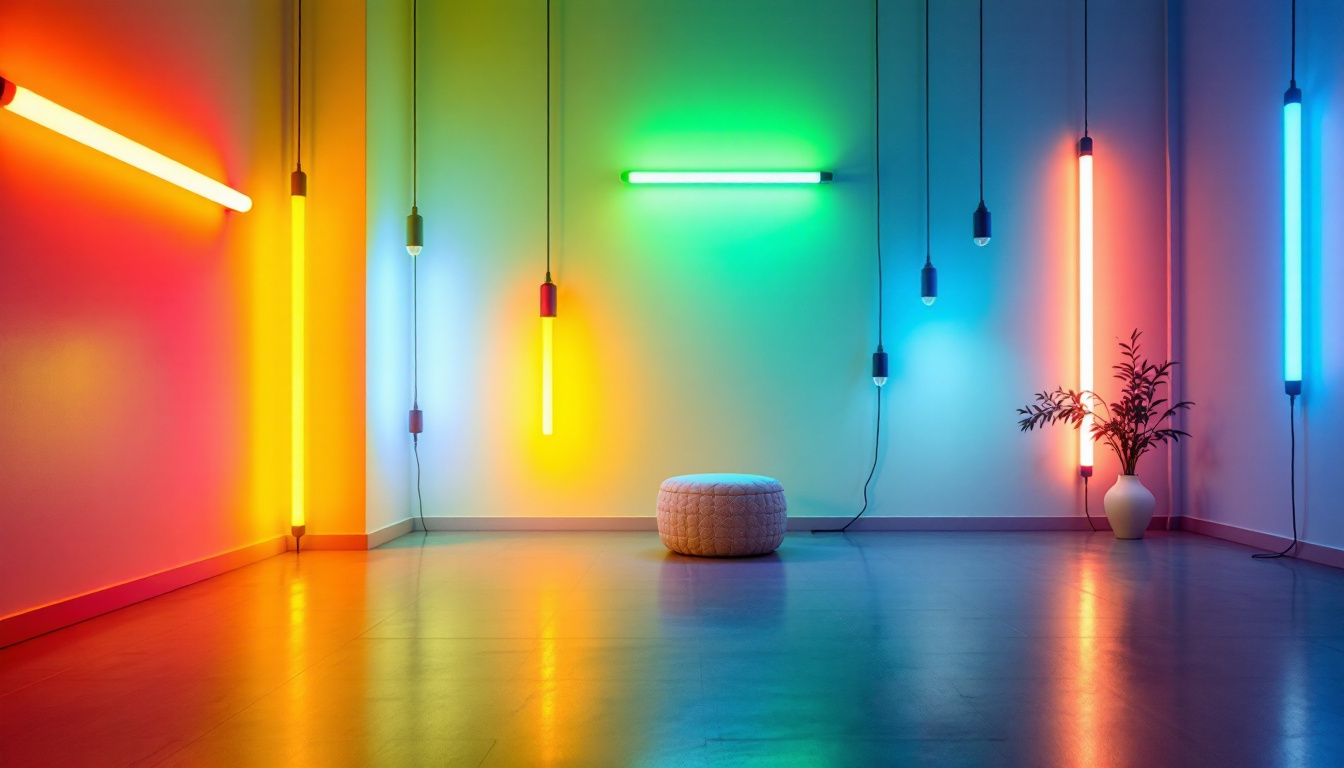

Lighting is a critical aspect of any construction or renovation project, influencing not only the aesthetics of a space but also its functionality and energy efficiency. For lighting contractors, understanding the nuances of lighting design, installation, and technology is essential to delivering quality results that meet client expectations. This article aims to demystify lighting, providing valuable insights and practical knowledge that every lighting contractor should possess.
Lighting design is more than just selecting fixtures; it involves a comprehensive understanding of how light interacts with different environments. Effective lighting design enhances the spatial experience, creating ambiance and improving visibility. Here are some fundamental concepts that every lighting contractor should grasp.
Lighting can be categorized into three primary types: ambient, task, and accent lighting. Ambient lighting provides overall illumination, ensuring that spaces are adequately lit for general activities. Task lighting, on the other hand, focuses on specific areas where activities such as reading or cooking occur, requiring brighter, more directed light. Accent lighting is used to highlight particular features or objects, adding depth and interest to the environment.
Understanding the interplay between these types of lighting is crucial. A well-lit space often incorporates all three types, creating a layered effect that enhances both functionality and aesthetics. For instance, in a kitchen, ambient lighting might come from ceiling fixtures, while under-cabinet lights serve as task lighting, and decorative pendants provide accent lighting. This combination not only improves the usability of the space but also contributes to the overall design narrative, allowing homeowners to express their personal style through light.
Color temperature, measured in Kelvin (K), significantly impacts the mood of a space. Warmer light (around 2700K to 3000K) creates a cozy, inviting atmosphere, making it ideal for residential settings. Cooler light (above 4000K) tends to be more energizing and is often preferred in commercial spaces or areas requiring focus and concentration.
Lighting contractors should be adept at advising clients on the appropriate color temperature for their specific needs. For example, a restaurant may benefit from warmer tones to foster a relaxed dining experience, while a corporate office might require cooler tones to enhance productivity. Additionally, the choice of color temperature can influence how colors are perceived in a space; warmer lights can make colors appear softer and more muted, while cooler lights can enhance clarity and vibrancy. This understanding is essential for creating environments that not only look good but also feel right for their intended use.
Moreover, the integration of smart lighting technology has transformed how we approach color temperature and mood. With the ability to adjust color temperatures and brightness levels through apps or voice commands, users can tailor their environments to suit different times of day or activities. This flexibility allows for dynamic spaces that can shift from a bright, focused atmosphere during work hours to a warm, inviting glow for evening relaxation or social gatherings. As lighting technology continues to evolve, so too does the potential for creating personalized and responsive environments that adapt to our lifestyles.
The lighting industry has evolved dramatically with the advent of new technologies. Familiarity with these technologies is essential for lighting contractors, as they directly influence design choices, installation methods, and energy efficiency.
Light Emitting Diodes (LEDs) have revolutionized the lighting industry, offering numerous advantages over traditional incandescent and fluorescent bulbs. LEDs are energy-efficient, have a longer lifespan, and produce less heat, making them a more sustainable choice. They also come in various color temperatures and can be dimmed, providing versatility in design.
However, traditional lighting still has its place in certain applications. Understanding when to use each type of lighting is crucial for contractors. For instance, while LEDs are suitable for most residential and commercial applications, incandescent bulbs may still be preferred in specific decorative fixtures where warmth and ambiance are paramount.
Smart lighting technology is gaining traction, allowing users to control their lighting through apps or voice commands. This technology not only enhances convenience but also contributes to energy savings. Lighting contractors should be well-versed in the various smart lighting systems available, including options for integration with home automation systems.
When advising clients on smart lighting, it is important to consider their lifestyle and preferences. Some may appreciate the ability to adjust lighting remotely, while others may prefer simpler solutions. Understanding the client’s needs will ensure a tailored approach that maximizes satisfaction.
Proper installation is critical to the performance and longevity of lighting systems. Lighting contractors must adhere to best practices to ensure that installations are safe, efficient, and aesthetically pleasing.
Safety is paramount in any electrical installation. Contractors must be familiar with local codes and regulations regarding electrical wiring and lighting installation. This includes understanding load calculations, circuit requirements, and the proper use of junction boxes.
Additionally, contractors should be equipped to handle potential challenges, such as retrofitting existing structures with new lighting systems. This may involve assessing existing wiring and ensuring that it can support the new fixtures without overloading circuits.
Strategic placement and spacing of fixtures can dramatically affect the quality of lighting in a space. Contractors should consider factors such as ceiling height, room dimensions, and the intended use of the space when determining fixture placement.
For example, in a living room, fixtures should be spaced to eliminate dark spots while providing a warm, inviting glow. In contrast, task lighting in a workspace should be positioned to minimize shadows and provide adequate illumination for specific tasks. Understanding these nuances can elevate the quality of the final installation.
As energy costs rise and environmental concerns grow, energy efficiency has become a critical consideration in lighting design and installation. Lighting contractors play a vital role in promoting sustainable practices that benefit both clients and the planet.
Incorporating energy-efficient lighting solutions is not just a trend; it is a necessity. Contractors should advocate for the use of LED fixtures, which consume significantly less energy than traditional options. Additionally, recommending fixtures with high Energy Star ratings can further enhance energy efficiency.
Moreover, contractors should educate clients about the benefits of daylighting—utilizing natural light to reduce reliance on artificial lighting. This can be achieved through strategic window placement, skylights, or light tubes, which can significantly lower energy consumption during daylight hours.
Proper disposal of lighting fixtures and bulbs is essential for environmental sustainability. Many components, especially those containing hazardous materials like mercury, require special handling. Contractors should be knowledgeable about local recycling programs and disposal regulations to guide clients in responsibly disposing of old lighting products.
By promoting sustainable practices, lighting contractors not only contribute to environmental preservation but also position themselves as responsible professionals in their field, enhancing their reputation and client trust.
Effective communication with clients is crucial for successful lighting projects. Lighting contractors must be able to convey technical information in an understandable way, ensuring that clients feel informed and confident in their choices.
Every client has unique needs and preferences. Conducting thorough consultations to understand their vision, lifestyle, and budget is essential. This not only helps in tailoring lighting solutions but also fosters a sense of collaboration and trust.
During consultations, contractors should ask open-ended questions to encourage clients to express their ideas and preferences. This dialogue can lead to innovative solutions that exceed client expectations and enhance the overall project outcome.
Once the installation is complete, educating clients on the maintenance of their lighting systems is vital. This includes guidance on bulb replacement, cleaning fixtures, and troubleshooting common issues. Providing a maintenance guide can empower clients to take care of their lighting systems, ensuring longevity and optimal performance.
Additionally, offering follow-up services or check-ins can reinforce the contractor-client relationship, demonstrating commitment to quality and customer satisfaction.
The lighting industry is constantly evolving, with new technologies, design trends, and regulations emerging regularly. For lighting contractors, staying informed is essential to remain competitive and provide the best service to clients.
Participating in workshops, webinars, and industry conferences can provide valuable insights into the latest advancements in lighting technology and design. Many organizations offer certifications and training programs that can enhance a contractor’s skill set and credibility.
Networking with other professionals in the industry can also foster collaboration and knowledge sharing. Engaging with peers can lead to new ideas, innovative solutions, and potential partnerships that can benefit business growth.
As smart home technology continues to gain popularity, lighting contractors should embrace these advancements and incorporate them into their offerings. Familiarity with smart lighting systems, home automation integration, and energy management tools can set a contractor apart in a competitive market.
By being proactive in adopting new technologies, lighting contractors can provide clients with cutting-edge solutions that enhance convenience, efficiency, and overall satisfaction.
Lighting is a multifaceted discipline that requires a blend of technical knowledge, design sensibility, and effective communication skills. For lighting contractors, mastering these elements is essential to delivering exceptional results that meet client needs and expectations.
From understanding the fundamentals of lighting design to staying updated with industry trends, the journey of a lighting contractor is one of continuous learning and adaptation. By embracing new technologies, advocating for sustainability, and fostering strong client relationships, lighting contractors can thrive in this dynamic field, ultimately illuminating spaces with creativity and expertise.
Ready to elevate your lighting projects with the finest selection of spec-grade lighting products? Look no further than LumenWholesale, where we provide contractors with exceptional quality at wholesale prices that can’t be beaten. Say goodbye to the middleman and hello to cost-effective, high-performance lighting solutions for every project. With free shipping on bulk orders, you can trust that you’re getting premium lighting at the best value — all without hidden fees or compromises. Don’t miss out on the perfect combination of quality, affordability, and convenience. Wholesale Lighting at the Best Value is just a click away. Enhance your lighting expertise with LumenWholesale today.

Discover the must-have 4-foot fluorescent tube lights that every lighting contractor needs in their toolkit.

Discover how hiring professional lighting contractors can transform your home and elevate your business.

Discover the ultimate guide to mastering recessed exterior lights with insights from top lighting contractors.

Discover how fluorescent bulbs can transform your lighting designs with their energy efficiency and versatile applications.
Get notified when NEW deals are released.
Optimize your budget with wholesale discounts.
Only top-quality, specification-grade lighting products.
No additional costs at checkout - what you see is what you pay.
We understand the unique needs of contractors.